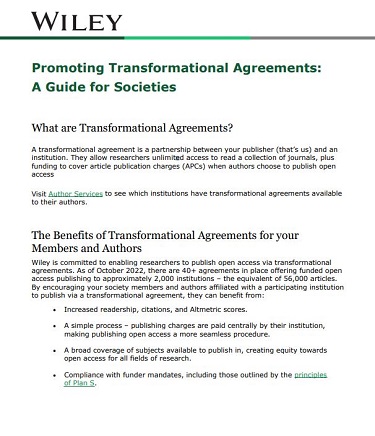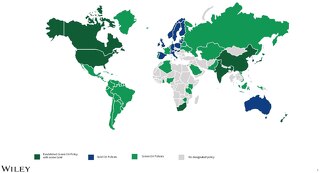credit-how-do-we-recognize-contributions-to-research-an-interview-with-vp-of-publications-at-agu
February 11, 2020
 | |
| Matthew Giampoala |
Wiley is committed to open research, facilitating faster and more effective research discovery by enabling transparency around how research has been created. CRediT, a “Contribution Roles Taxonomy” managed by the CASRAI initiative, provides a standardized description of the roles typically played by each contributor to a research output, increasing transparency around who participated in the research and what they did. It also facilitates recognition for the research undertaken and is informative to reviewers, editors and readers. Increasingly many publishers and journals are recommending and enabling use of CRediT. We interviewed Matthew Giampoala, Vice President of Publications at the American Geophysical Union (AGU) to learn more and find out why AGU titles are offering CRediT.
Q. Can you explain what CRediT is?
The CRediT taxonomy provides a framework for authors to document individual contributions to the work behind publications. Conversations among researchers, societies, funders and publishers about academic contributions formally began in 2012 at an international workshop on contributorship and scholarly attribution. From there, CRediT eventually grew into the 14-item taxonomy that we see today, allowing individuals to document the ways in which they contributed to a piece of research. The 14 potential roles of CRediT cover many essential contributions, including some that are often obscured when looking only at an author list. These include: Conceptualization; Data Curation; Formal Analysis; Funding Acquisition; Investigation; Methodology; Project Administration; Resources; Software; Supervision; Validation; Visualisation; Writing – original draft; Writing – review & editing.
Q. Why did AGU decide to adopt CRediT?
While some AGU titles, for example, JGR Atmospheres, were offering CRediT from 2016 (see this editorial), AGU started offering CRediT for all new submissions to AGU journals in November 2017, to enable researchers to be recognized for all of the ways in which they contribute to individual projects and to the progress of research in general. We often see publications with large author lists or situations where authors want to clarify that several authors contributed in a similar capacity. Whether it is for purposes of promotion and tenure or finding collaborators, everyone benefits from the additional visibility that CRediT brings into the work behind the papers we publish. AGU’s Brooks Hanson and co-authors advocate that journals adopt transparent standards for authorship, including the use of CRediT for attributing contributions, and require authors to use the ORCID persistent digital identifier.
Q. How did you go about implementing it for your authors?
CRediT is currently optional for our journals. While we have strict criteria on authorship that emphasise that only those who have contributed to the research and preparation of an article should be listed as authors, we want to provide the ability for all to use the CRediT framework when acknowledging contributors. This year, our journal Earth and Space Science will pilot making CRediT required for all articles. We hope to increase participation across our journals in the coming months through further integration with our manuscript submission system.
Q. Would you recommend other journals adopt CRediT?
I would definitely recommend this to other journals and publishers, especially those looking to nurture open research. For example, AGU has been increasing requirements on sharing of research data for our articles, and it’s only fair to give those involved in data curation full credit for their work.
Q. What’s next in terms of open research initiatives for AGU?
We’ll be piloting a number of open research initiatives over the next year. Everyone should check out the Enabling FAIR Data Project as we continue to make progress on sharing research data. Our new journal AGU Advances will be piloting several ways to increase transparency in peer review. This will include a cross-review step where peer reviewers can see each other’s comments before finalizing their reviews, and the publication of peer review reports alongside published articles.
 | |
Example of CRediT display from JGR Atmospheres. |
Thank you, Matthew. It’s great to see AGU journals embracing CRediT. At Wiley, we can enable journals to offer CRediT, so if you would like to offer CRediT on your journal please speak with your Journal Publishing Manager.











